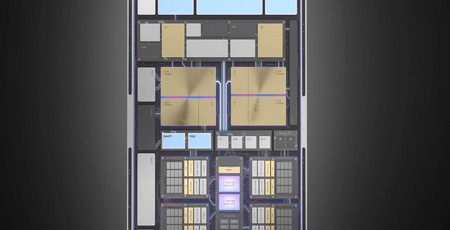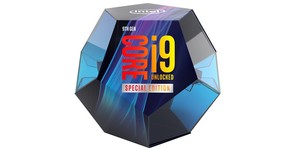
Intel has used its press conference at the Consumer Electronics Show 2019 (CES 2019) to reveal that mobile devices built around a new Ice Lake 10nm SoC that utilises its Sunny Cove CPU architecture and onboard Gen11 graphics will begin shipping in the 2019 holiday period (i.e. October 2019 onwards).
That Intel has had problems bringing its 10nm process to fruition is no secret, as it was originally scheduled to arrive in mass production in 2015 but was subjected to a seemingly unending series of delays culminating in an admission in July 2018 that parts would not arrive en masse until 2019 (an odd, solitary 10nm Cannon Lake laptop CPU did emerge in 2018 but not in any volume). Thankfully for Intel, that appears to be a schedule to which it is finally able to stick: After denying rumours that 10nm had been cancelled altogether, Intel went on to detail its new Sunny Cove CPU architecture and Gen11 integrated GPU architecture late last year, with both set to debut on 10nm. We presumed at the time that this would be the start of Ice Lake, since that has long marked the ‘Architecture’ stage in Intel’s Process-Architecture-Optimisation execution plan, and this news confirms that to be the case.
Now Intel is putting some extra meat on the bone, confirming the arrival of the new Ice Lake SoC in a variety of mobile devices due for release in Q4 2019. While SKU specifics are yet to be revealed, we do know from Intel’s Architecture Day 2018 that the SoC will feature a four-core, eight-thread (4C8T) Sunny Cove CPU and Gen11 onboard graphics with 64 Execution Units. As previously revealed, this GPU will feature upgraded encode/decode capabilities that enable support for 4K video streams and 8K content creation, VESA Adaptive Sync, and HDR with native HDR tone-mapping. The SoC will also move to LPDDR4X memory, which will bring power/efficiency advantages as well as assisting in feeding the new faster graphics engine with memory bandwidth said to hit at least 50GB/s.
Another component will be Intel’s fourth-generation image processing unit. Offering 4K30 video capture with an improved denoise algorithm for low light conditions and 16MP still image captures, the IPU avoids the need for a USB-based camera and thus removes the need for an off-chip component and paves the way toward ever thinner bezels.
Thunderbolt 3 will also, for the first time, be integrated directly onto the SoC, and Intel isn’t stopping there, as you also get direct Wi-Fi 6 (also known as 802.11ax) integration. This level of on-chip integration frees up additional space in products for battery and shrinks board sizes and power requirements, though Intel admitted that its Thunderbolt 3 over Type-C integration still required at least a few motherboard components to work.
The new mobile devices can also expect to benefit from platform-level battery optimisations including the power gating of GPIOs as well as PCIe and USB ports and the memory subsystem. Motherboards are also being designed with less current leakage on VRMs, and 13” screen power consumption, for example, is expected to reduce from ~2W to ~1W.
Intel seemed to have a point to prove regarding 10nm at its press conference, which is unsurprising given how much stick its gotten over the constant delays. As well as the above Ice Lake SoC, Intel also revealed an ultra-low-power 10nm ‘Lakefield’ SoC with a single big Sunny Cove CPU supported by four Atom-based cores and additional components stacked on top using the previously announced Foveros packaging technology, and this is also set to ship this year. Not stopping there, 10nm is also expected to appear in a network SoC designed for 5G and codenamed Snow Ridge, and finally we can expect 10nm Xeon server processors in 2020.

MSI MPG Velox 100R Chassis Review
October 14 2021 | 15:04








Want to comment? Please log in.